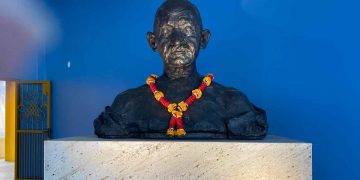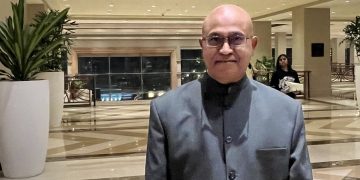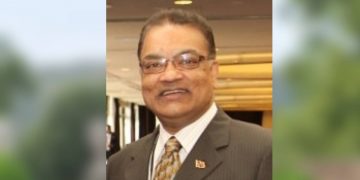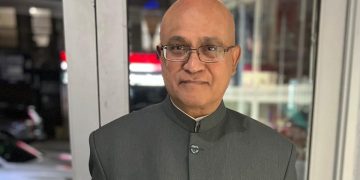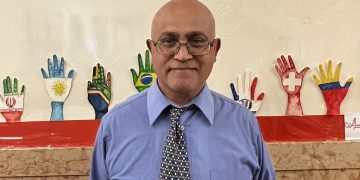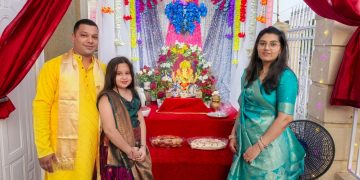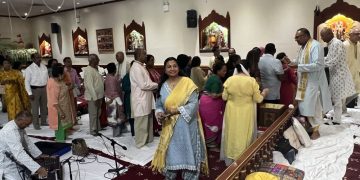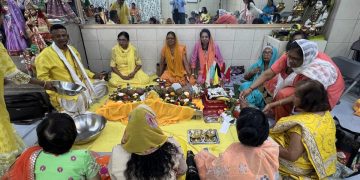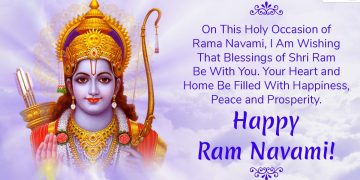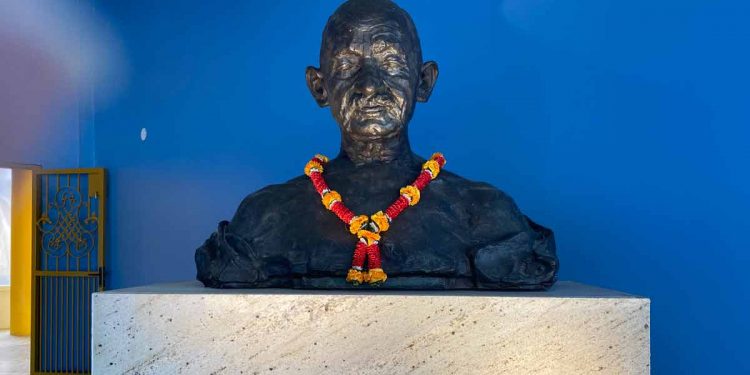PORT-OF-SPAIN: Some 52 years later, the Mahatma Gandhi Centre for Cultural Co-operation, has taken shape, and it is projected to open shortly. On the invitation to visit the Centre by Shri Anniruddha Das, Second Secretary, Indian High Commission, on Tuesday, October 27, I was amazed at the magnificent edifice fitted with modern-day theatre logistics, seating capacity in excess of 700, library facilities, and offices. It is unique, even though it took so long in coming.
This Centre was first promulgated by then Indian Prime Minister, Shrimati Indira Gandhi and the then Trinidad and Tobago Prime Minister, Dr. Eric Williams, both of whom are now deceased. It is a great tribute to both outstanding leaders to have inked such an institution. Mrs. Gandhi, the first Indian Prime Minister to touch on our soil, visited Trinidad and Tobago for two short days, and this could well be the most outstanding feature of her visit here. Now, the progenitors of this cultural edifice are no longer, and it must be a tribute to the wisdom that today, this establishment is now a full reality. And the genesis began in October 1968. However, 58 years late, but better late than never.
Just for the record, following the furor that evaporated in local politics, and to assure the Government of India, then Prime Minister A.N. R. Robinson sent his Deputy Prime Minister Winston Dookeran who took along his Permanent Secretary Carlyle, who recently passed away, in 1987/88 to meet with then Indian Deputy Prime Minister Moraji Desai to assure him of the Government of Trinidad and Tobago confirmation to have the Mahatma Gandhi Cultural Centre established in this country and to reconfirm the protocols. It was a necessary diplomatic visit so as to get the facts correct.
Whilst the populace felt that the construction of the Centre was a lost dream after some 38 years in abeyance, it was given a new stimulus by the then Vice-President of India, Shri Bhairon Singh Shekhawat on a visit here in April 2006, as he told a reception held in his honor at the Trinidad Hilton that long-awaited Centre will become a reality, some fourteen years later.
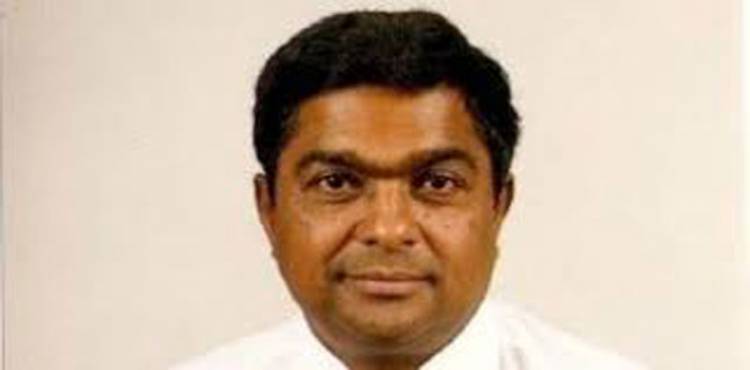
The Gandhi Centre is now a living reality and a visible manifestation for the approximate 700,000 persons of East Indian extraction strong Indian Diaspora. Between 1845 to 1920, some 148,000 East Indians were brought here by the British Government to work on rescuing the agricultural economy, which was originally filled by the African slaves. The agricultural economy was experiencing a slow death, a point of extinction.
The Gandhi Centre offers three messages to the people of T&T. Firstly, it will mark the 72nd anniversary of Gandhi’s assassination on January 30, 1948. Secondly, it will mark the 151st birth anniversary of Gandhi on October 2, 2021, and thirdly it will mark the 175th anniversary of Indian Arrival Day.
At the “Bhoomin Puja’ on Saturday, April 2000, at Mt. Hope, the late Indian High Commissioner to T&T, Prof. Parimal Kumar Das called it, “the Sangam”, the point of confluence between the cultures of India and T&T. Then Minister of External Affairs, Ralph Maraj termed it, “the noble cause of national unity as it is even important for those who do not know enough of Indian culture to take full advantage of the opportunity that comes with the establishment of Mahatma Gandhi Institute”.
He added : “The relationship between India and T&T is as strong as when the seeds of India were first scattered in this country”. The establishment of the Institute is a very significant occasion in the cultural and religious history of T&T, and India.
The first concrete step was taken with the signing of the Cultural Agreement in 1987 by then Minister of External Affairs, Basdeo Panday, and the visiting Indian Foreign Minister, Narain Dutt Tewari. Four years later, in November 1991, a Protocol was signed between the two governments.
On that occasion, Ralph Maraj who was Minister of Foreign Affairs in the PNM Government handed over to the Indian High Commission the deed of a lease for the five-acre plot of land at Mt. Hope for the construction of the Centre. And prior to the then Prime Minister Basdeo Panday’s sojourn to India, the United National Congress Government, in January 1996, provided a Caroni(1975) bungalow, Caroni, as a temporary center.
According to the Indian High Commissioner, Shri Jagit Singh Sapra, in 2006, pointed out that the seed of Indian culture will take a new direction and will grow into a robust tree with dedication, enthusiasm, and unwavering commitment. It is projected that the Institute will provide opportunities to Indian cultural enthusiasts to learn Indian music, culture, the arts, dance, and the learning of Hindi. And it is aimed at the people of T&T to preserve and promote the heritage of the, “Mother Culture” through the vicissitudes of history. Another focus is that this Institute will serve as a meaningful extension to the Indian diaspora.
The late Prof. Das pointed out that there seems to have no parallel in the history of the movement for national liberation and self-assertion. The construction of the Gandhi Centre is a living testimony and an urgent need to re-enact another movement or vehicle, to retranslate in the hearts of our leaders—religious, political, social, community and international agencies and organizations—to take a serious and scientific look and spread Gandhi’s Universal Message of Truth, Non-Violence, and Peace to all mankind. Over the years, it is acknowledged that subsequent Indian diplomats took up the task to ensure that the Centre was activated. They included Virendra Gupta, Malay Mishra, Bishwadeep Dey, and now it is Kumar Sahu to finally deliver it.
Caribbean leaders and educators should take it upon themselves to establish a Chair of Gandhian Studies at the three campuses of the University of the West Indies. The late President of India, Prof. Sarvepalli Radhakrishanan remarked that: “We made Socrates drink his death, we nailed Christ to the Cross. We stoned and killed our prophets. Gandhi met his death facing the forces of darkness, of ultimate unreason, and though it has increased the powers of light, love and reason”.
European thinker, Romain Rolland declared that he regarded Gandhi as, “a Christ without a Cross”. Nobel laureate, Rabindranath Tagore acknowledged Gandhi saying: “The influence which emanated from Gandhi’s personality was ineffable, like music, like beauty, its claim upon others was great, because of its revelation of a spontaneous self-giving.” Noted physicist Albert Einstein remarked that further generations will doubt that such a human personality stalked the earth in blood and flesh”.
Dr. Williams in a radio broadcast to mark Gandhi’s 90th birth anniversary bemoaned: “India will remain one of the most lovable aspects of his many-sided character. He has left behind him not only the effects but the record of a great life”. Former Minister of Foreign Affairs, and now Professor of Practice, International Institute, UWI, Winston Dookeran, noted that if Gandhi’s message was taken seriously the world stage would not have been a theatre of war and international indiscipline,
The Mahatma Gandhi Cultural Centre remains a serious and deliberate memorial to his life and passing, according to Sant Brahmavairagy, the spiritual leader of the Brahma Vidya Peetham, Caratal, Claxton Bay. This Institute will benefit all the peoples of T&T as the culture of India is an integral factor of the heritage of all humanity, now and in the future. It is against this background that all the peoples will continue to cherish and work towards the fulfillment of its philosophical, religious, cultural imperatives.
